Special Guest Edition: How We Homeschooled Today by Ruth Gaskovski
Academic Rigor, Sheep Hearts, and Phone-Free Social Webs: An afternoon at the Classical Homeschool Program
I’m delighted to be sharing a guest post from Ruth Gaskovski. Many of you will already be fans of Ruth’s Substack, School of the Unconformed, ‘a newsletter exploring family and education in an age of upheaval’. Specifically, Ruth is focusing on the role of technology in our lives and our children’s lives, and supporting what she calls ‘a tectonic shift in our relationship to technology’. I’d especially recommend two of her recent posts, Charting the Course for Family Tech Use and Beyond Digital Detox: How to Make a Home for Humans. Ruth has also kindly unlocked the following two articles which are usually paywalled, and which might be especially useful for home educators: Rehabilitating Ferals of the Digital Age, which contains classic vocabulary study and extensive reading lists, and The Great Forgetting, which includes poems and famous speeches for memory work.
Ruth has started several homeschool programs in her local area and her dedication to building a community—a real life one, not just an online one—is inspiring. Here she offers some practical guidance and suggestions based on her own extensive experience. Enjoy!
I go to the fridge to retrieve the sheep hearts with lungs attached. The spongy mass would be repulsive to me, were it not so fascinating at the same time. The children of our classical homeschool co-op will dissect these organs as part of their study of the respiratory and circulatory systems. And few things bring science to life quite as much, as cutting through the fibrous chambers of heart and lung tissue. This will be excellent preparation for our guest speaker next week, a paramedic, who will add another dimension to this unit of study, by training students in basic CPR techniques.
We have homeschooled all three of our children (aged 11, 15, and 17) from the start. Our oldest is now entering her second year of university, and as you can imagine, our daily routine has significantly altered as our children got older. One thing that has remained the same, is our weekly group meetings. Ever since our first child was of kindergarten age, I have organized a variety of homeschool co-ops. They started out as forest school-type early education and Charlotte Mason-style meetings, and then changed into more academically rigorous hands-on science classes, spelling bees, speed math, and public speaking programs as the kids got older. To help cultivate a solid, academic and social community, I started a classical homeschool program, which offered elementary to high school students classes in physics, chemistry, biology, classic vocabulary and stem study, Latin, logic, and was topped off with sports and social time.
We have since moved cities and I have started to seed another homeschooling group in our new community, although I am currently taking a sabbatical from my organizational role (Dixie Dillon Lane just recently posted a great article on the need for seasons in our hospitality—or in my case, coordinating—roles). The children often reflect back on their experiences in our homeschool program, and many families have commented that this type of group was unique in its structure and support. I thus decided to reach back, and recount a typical classical homeschool program day when our kids were aged around 7, 11, and 14, to provide readers with some inspiration and encouragement for community building.
In the morning…
It is Friday again and the kids are excited to wrap their week up with an afternoon at the “classical group”. As we do every day, we start out with a short morning walk in the woods and parkland across from our home. We keep this habit up almost without fail, no matter the weather (apart from torrential downpours), because it helps to clear the mind, get the body moving, and has the added benefit of arriving home to start school. Our walk often follows the exact same route, and rather than seeming repetitive, it breeds intimate familiarity with our trails and neighborhood.
Back home, the kids spend the remainder of the morning preparing for their afternoon classes. This includes:
Completing science readings, discussion questions, sketch, and memory work
Reviewing the classic vocabulary and Latin stem lists in preparation for the weekly quiz
If time allows, they complete a math lesson and practice sheets
While the older two only need instructions and reminders on what work to complete, my youngest son still requires me at his side to practice reading, math, and guidance on finishing his science homework for the week. This week, the students in our program who are in grade 5 and up1, are working through unit 6 of the Biology for the Logic Stage Elemental Science curriculum, studying the respiratory and circulatory systems. The students in grade 2 to 4 are following alongside with the body systems unit, creating lapbooks on heart circulation. The Elemental Science curriculum is well-suited to a co-op setting, and the publishers even offer a special package for homeschool groups. It is loosely based on the Well-Trained Mind structure for science study: read about the topic in the encyclopedia, answer discussion questions, complete a sketch, practice memory work for new vocabulary and definitions, and wrap the week up with a hands-on science experiment.


While the children are working, I finish assembling all the materials that will be needed for the afternoon classes. I have started to write detailed lists, packing all the boxes and bags the night before, because time seems to move at lightspeed during these mornings, and I detest hurrying. Yet, I still end up scrambling and remind myself to prepare even better for the following week.
If you’re new to How We Homeschool, consider subscribing and never miss a post. It’s free!
In the afternoon…
Our homeschool program is fortunately located just a quick drive down the street, in a spacious church basement equipped with six classrooms, a vast common space, kitchen, and gym. We arrive a bit early to arrange desks and chairs, hang up the schedules on the classroom doors, and organize the materials for the afternoon. Being Swiss, I keep quite a strict rule about timeliness, as late arrivals disrupt the flow of the class. Here is what our schedule looked like for that year:
Today’s meeting brings particular excitement as we have a guest speaker for our science class: A paramedic. I met him at a peculiar birthday party a few weeks ago, where the parents instead of offering the usual fun and games, had invited him as a guest to teach the kids all about the tasks of a first responder. He is more than happy to repeat this demonstration for our homeschool program, and comes prepared with boxes full of “Resusci Annie” models used to teach CPR techniques. He feels it is an important and potentially life-saving task to teach even young children basic first responder skills, because survival rates for cardiac arrest depend on how quickly heart massage is started. He emphasizes that if bystanders do not start CPR immediately, and instead wait for a paramedic, survival rates drop in accordance with elapsed time. He laments that public schools stopped inviting paramedics to teach children these vital skills because of liability concerns, stating that it is costing lives.
The science class this afternoon is a true hit, and the students are engrossed in practicing CPR skills on “Annie”, and asking questions about the tasks of a first responder. Having dissected sheep hearts and lungs the previous week, their understanding of the intricate pumping mechanisms is now translated into life-saving action.
I am responsible for instructing speed math games and Latin stems / classic word study. Students absolutely love the math games, and the class often erupts into uproarious laughter and yelps of eager competition. I have used Right Start Math2 games for years and have not come across a more effective and engaging method for practicing addition, subtraction, multiplication, and division facts. One of their favorites is “corners speed” (image on right), where players have to match their cards as quickly as possible to make sums of 5, 10, 15, or 20.
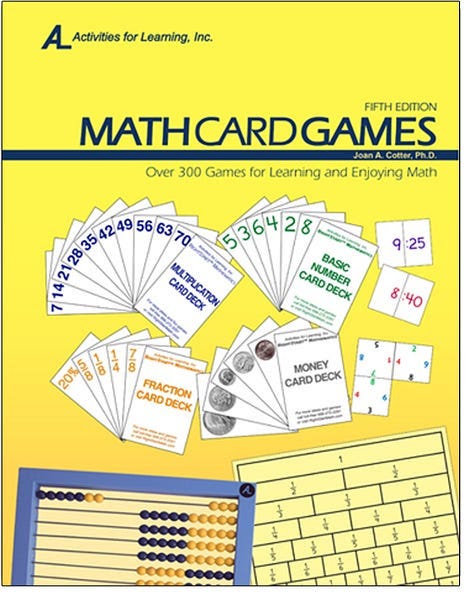
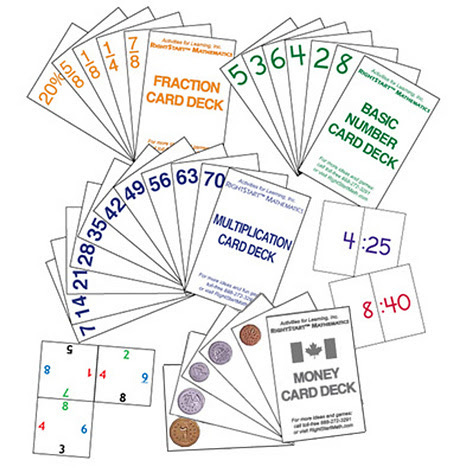
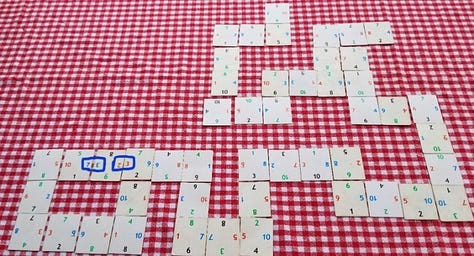
After our half hour of math games is up, I continue on to teach students Latin stems and classic vocabulary. Each week they study a list of ten stems and five classic words. Together we discuss the meaning of stems, share examples and interesting sentences, play flash card games, and conclude with a speed quiz. For homeschool students, who usually have little exposure to timed tests, this is a small and pleasant taste of working under time pressure. They delight in the anticipation of turning over their papers and speeding through the page, calling out “Done!” when their definitions are complete. Because the quiz is easy and all the stems are thoroughly reviewed together, students take pleasure in the competition. Here is an example of my study lists:
If you enjoyed these, you may be interested to know that I will be publishing a new list (including practice, flashcards, and quiz) each week for paying subscribers of School of the Unconformed. For a sample schedule on including Latin stems in your weekly homeschool studies, see my suggestions here.
Finally, gym class adds a physical layer to the afternoon’s academic work, and consists of a rotation of sports including badminton, soccer, floor hockey, and volleyball. This class is facilitated by the parents, who over the duration of a term sign up twice to help guide the students during their gym time.
At the end of the afternoon, the students are filled with satisfaction from new experiences, achievements, conversations, and physical exercise. As homeschoolers, we can provide our children with an incredible curriculum, but we cannot fabricate the enjoyment, satisfaction, and competitive spirit that learning alongside other capable students creates. Our children love their weekly time at the “classical group”, as it offers a welcome dose of learning in a class setting. Yet, they also return home with a sigh of relief, ready to return to embrace their quieter home study with renewed appreciation.
Behind the scenes
The academic classes in the homeschool co-op were taught by three homeschool parents (with background in the instructed class), who got paid an hourly rate comparable to the private school setting. In order to lighten their prep time, I took care of all the planning, handouts, and materials needed for the classes. The only cost of the program was the teacher salary and the church basement rental, which was split among around 25 families. This kept the cost of the program very low. In order to support large families, I had a policy where all families pay the same rate, regardless of how many children they have (there is only a small materials fee added). This was a welcome change for parents of large families, who often cannot afford to register all of their children in classes because of the exorbitant cost.
This homeschool program model relieves parents of the pressure to prepare and instruct lessons, which is a requirement to participate in most co-ops. A common experience of many homeschooling parents, is feeling appreciative of all the wonderful group activities a co-op offers their children, while also being utterly exhausted once the term is over because it entailed so many additional duties.
Needless to say, our particular program structure was wildly popular with parents, who spent the afternoon socializing in the common area with other homeschooling parents, while the kids attended classes. Note that even though the parents were not required to instruct, this was not a drop-off program. Parents were asked to remain on the premises3 for the duration of the afternoon. Tables abounded with treats, coffee, and tea, and discussions ranged anywhere from differences between religious denominations4, recipes, daily schooling challenges and successes, to curriculum choices and university application procedures.
The homeschool program thus doubled as a parent support group, with experienced homeschoolers offering a wealth of advice and encouragement. Over time, many of the relationships served a valuable mentoring role, with veteran homeschoolers guiding new homeschoolers on how to face challenges in instruction, scheduling, curriculum choice, or student motivation. You may yourself have experienced the relief of talking with parents who have gone through the same experience as you, can empathize, and importantly, can provide a reality check. If you are having a rough day or week, lack of support can lead you to question whether you have made the right choice, whether you are a good enough teacher, whether you are failing your child in some way. When things go wrong at school, one can blame the teacher or the system, but in homeschooling the buck stops with you. We all have bad days, this is true whether your child is in school or at home. Afternoons like these help families solve challenges, affirm that they are not alone in this educational choice, and stay grounded in their commitment to home education.
Another unique feature of the classical homeschool program is that it outlined parameters for a harmonious learning environment, including spelling out rules for (non) technology use. In my guiding document5 that all participants signed at the beginning of each term I stated the following:
TECHNOLOGY: The Medium is the Message
This program encourages face-to-face communication and a learning environment free of distractions from digital devices. Those families who participated in the last session are already familiar with my reasoning for this seemingly outlandish suggestion. For new families (or for those still baffled) here is a brief explanation:
The Classical Homeschool Program aims to provide an opportunity for students to grow in real relationships, practice face-to-face conversation, and to enable the development of deep attention (in addition to rigorous academic classes). The development of these abilities is hampered or even completely prevented by the use of electronic devices. As homeschoolers we are their primary role models. Thus for the duration of the program, I would like to give students and parents alike a respite from the electronic deluge that usually surrounds us. For a more articulate version of my reasoning, check out the TED talk “Connected, but alone?” by MIT psychologist Sherry Turkle.
While inside the building, students and parents are not to use phones, laptops, tablets, etc. Students must leave devices in their parents’ care.
Although this guideline was met with some raised eyebrows by a few parents, the benefits of a clear rule became quickly evident. Surprisingly it was the parents who seemed to reap the largest benefits, as this weekly gathering was the only time when they were essentially carefree. There was no opportunity to fritter time away surfing sites or social media or run rushed errands, and it led to a welcome change of uninterrupted face-to-face conversations. If you are part of a group, or are planning to lead one, I highly encourage you to take this bold step and say “no” to devices.
The classical homeschool program that I described here, is just one version of a rich variety of community possibilities. There are groups that meet simply for fun and socializing, others for physical exercise or specific sports, yet others have a co-op structure and include an array of classes as wide-ranging as soap-carving, chess, introduction to coding, creative writing, photography, and public speaking. It is important to find a group that is a good fit for your family. Sometimes this might entail driving a bit farther in order to join a program that meets your needs and has the ‘right chemistry’. Sometimes it may even mean starting your own.
Looking back at our experience homeschooling over the years, I can affirm that it requires two essential ingredients: patience and community. I hope that this post offered you some encouragement, concrete guidance, and inspiration to cultivate your own homeschooling community.
Until next time,
If you’re new to How We Homeschool, you might like to have a look through some previous guest posts:
Katherine Seat getting out of the house on a noisy day in Cambodia.
Renee’s account of a homeschool day with her son, who has autism.
Mary-Ann Horley’s account of home education at home and on holiday.
Allyse Hopkins’ very relatable day with her family of four in New Zealand.
Susie Wales’ life with her three boys in Florida.
Rachael Ringenberg’s thoughtful glimpse into her life with four girls in Vermont.
Joel Bowman’s ‘away schooling’, travelling around the classical world with an eight year old.
If you’d like to share one of your days, please get in touch! All styles of home education welcome.
And if you’re not subscribed, sign up for free and never miss a post.
We have divided the older group of students into grade 5 to 7, and grade 8 and up. Students in the higher grades complete the same work, but are expected to complete more challenging readings and additional research.
Full disclosure: I am an affiliate and have even represented Right Start Math at a conference earlier this year. It is actually one of the only curricula that I am an affiliate for, because I have seen how effective it has been for all three of my kids in promoting a deep understanding of math concepts while also using games rather than worksheet drills.
This was also required for insurance purposes which stipulated that there must be one adult per five children present for the duration of the program.
The homeschool program was open to participants from all denominations (we had a rich mix of protestants, Catholics, and Orthodox families), with the understanding that the program was based on “a classical education model, rooted in traditional, historic Christianity, designed to train the student’s mind to absorb information, think analytically, and express ideas clearly”. Non-Christians were welcome to join. In my experience over the years, this was the most inter-denominational setting I have ever come across, and it worked wonders in connecting people and building understanding.
I first composed this document in 2018. Re-reading it now, I am struck that my writing on Substack five years later, is just a basic extension of this paragraph.





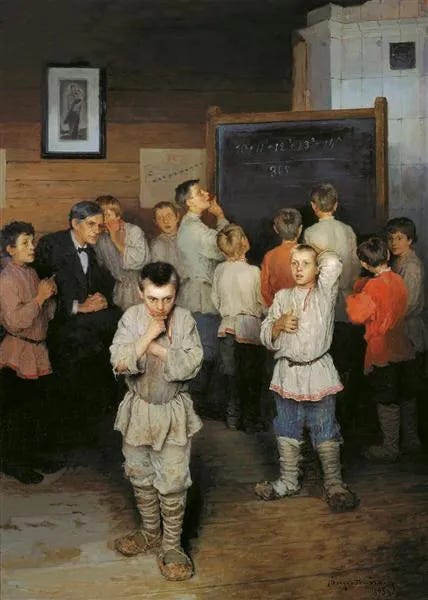
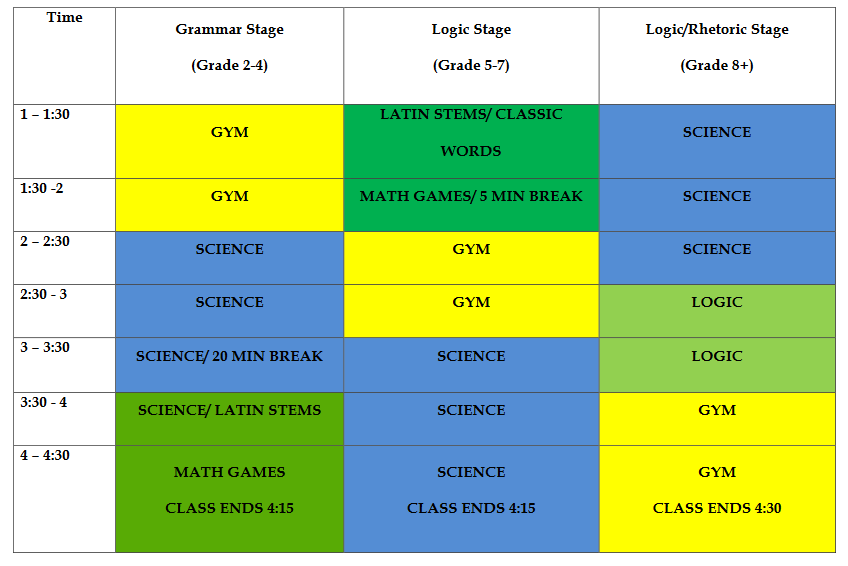




I would love love love to do something like this. It also feels extremely intimidating! But I shall ruminate on the idea and who knows what may come of it. Thank you for inspiring me, Ruth, and for your clear description of exactly how your programme worked. (And we will begin learning Latin stems right away - this may well satiate my six-year old’s desperate desire for me to teach her ‘another language’ - at least for now!)
Terrific! Many thanks to both of you.